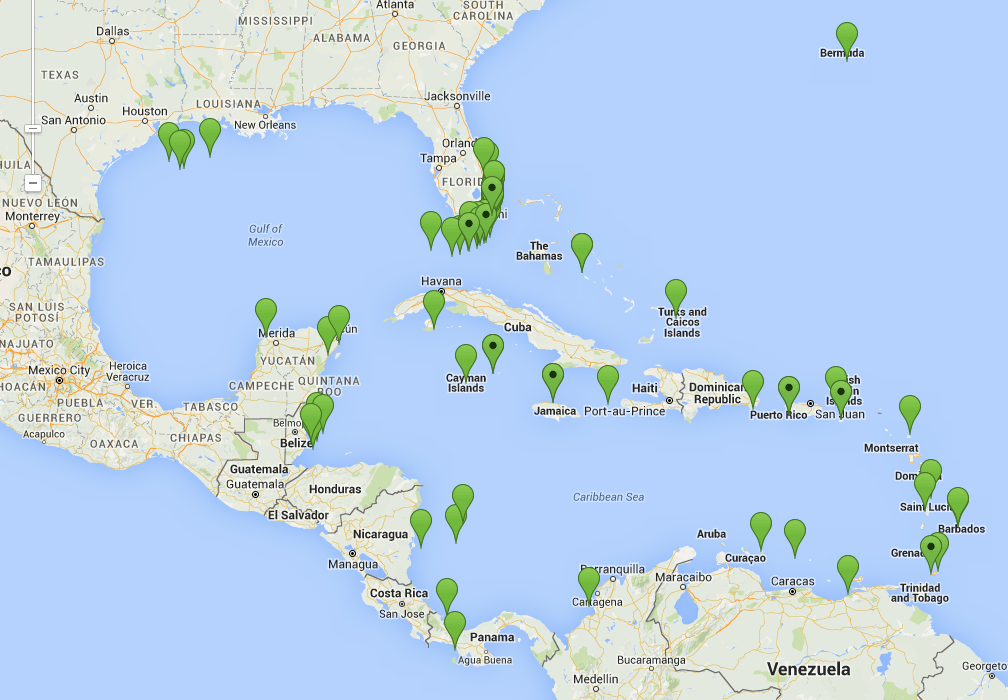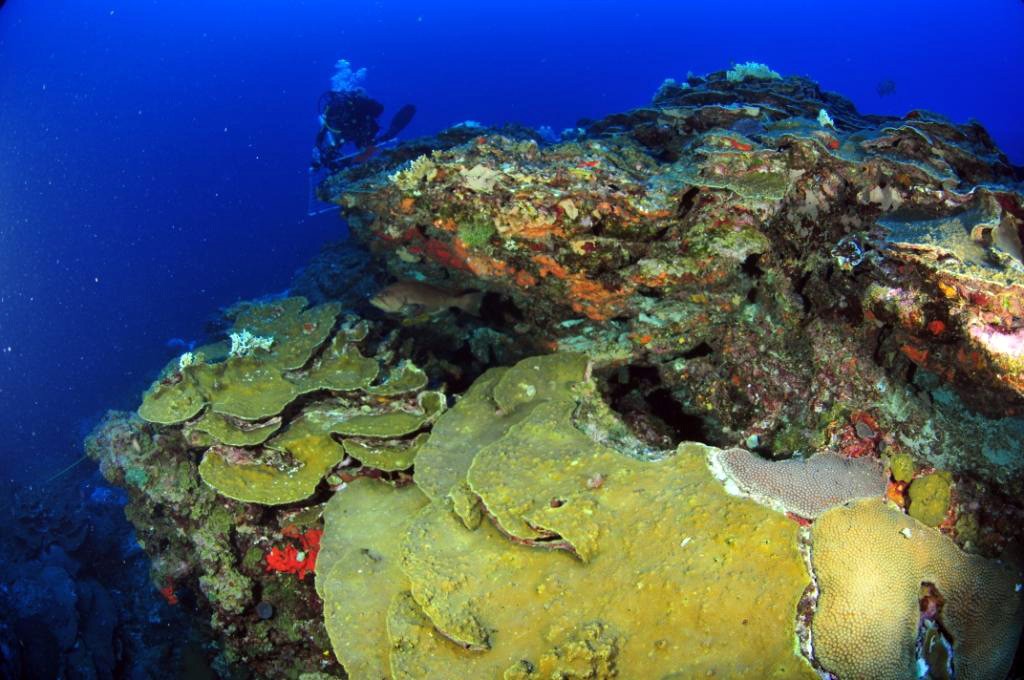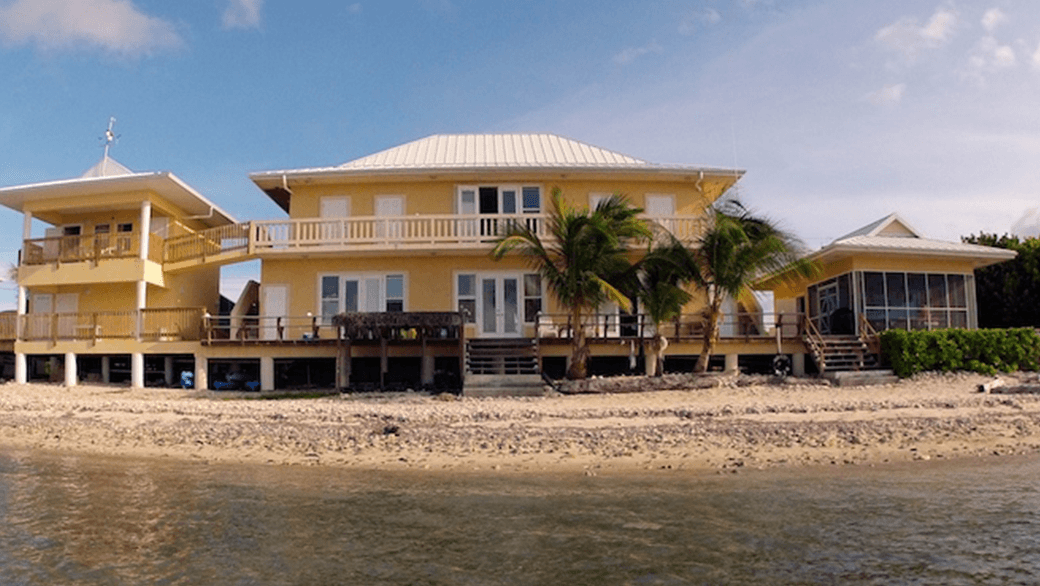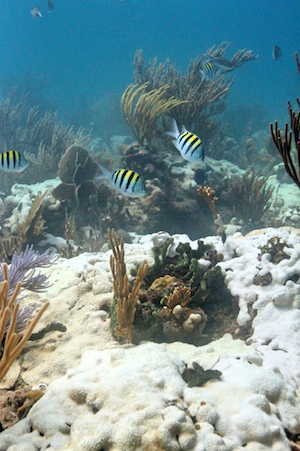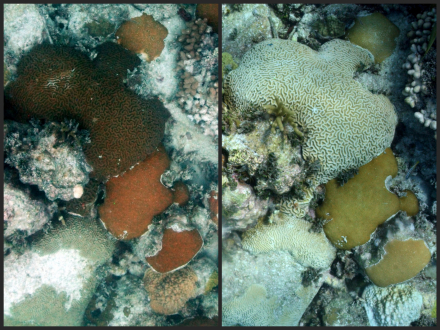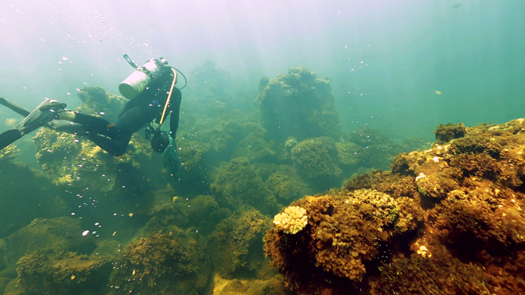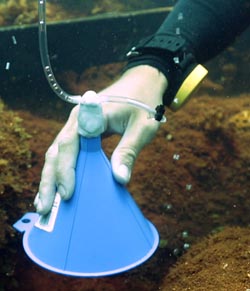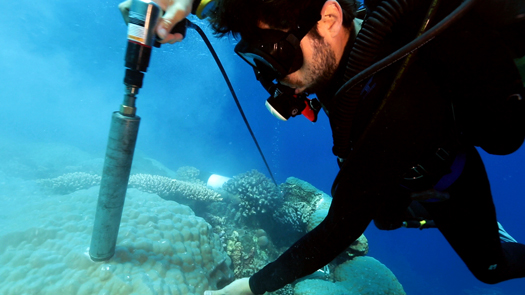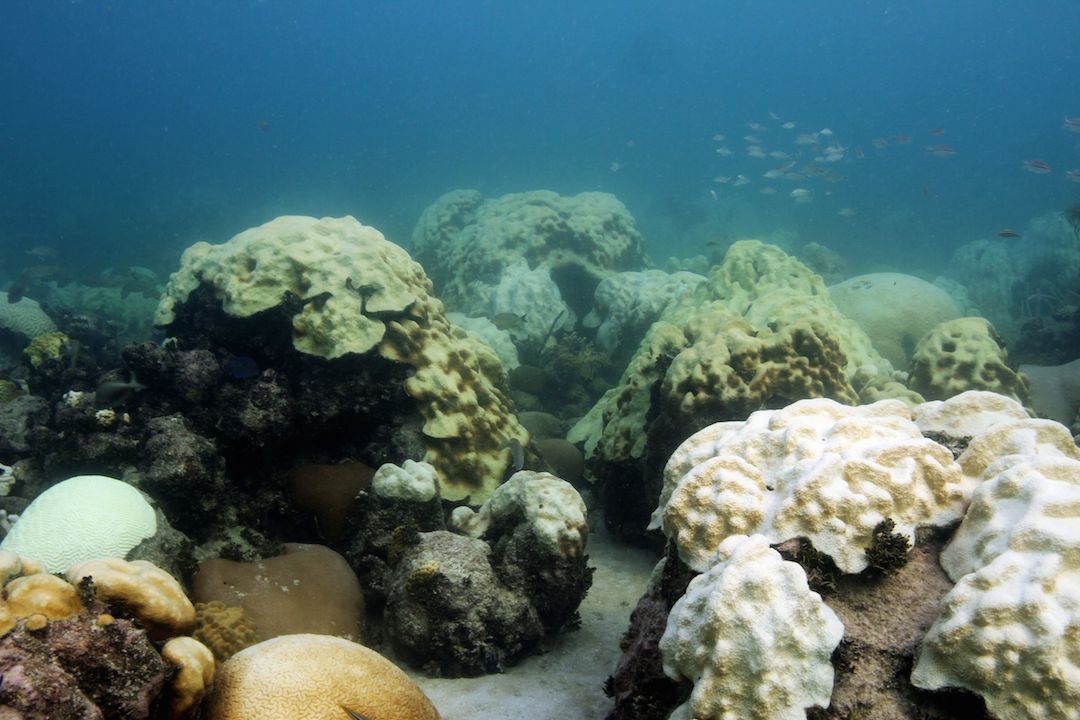AOML’s Coral Health and Monitoring Program (CHAMP) rolled out a new data source in October as part of its online data query tool. Optimally Interpolated Sea Surface Temperatures, or OISSTs, are data from microwave satellite observation platforms, products that are sourced from Remote Sensing Systems. Whereas other sea surface temperature sources might be missing data due to orbital gaps or non-ideal environmental conditions such as cloud cover or rainfall, the OISST platform corrects for these errors to provide a complete, daily sea surface temperature map that can benefit coral health and monitoring efforts worldwide.
A study of Galápagos’ coral reefs provides evidence that reefs exposed to lower pH and higher nutrient levels may be the most affected and least resilient to changes in climate and ocean chemistry.
The Galápagos Islands are a unique habitat that allows scientists to study many ecological conditions, including exposure to naturally high levels of oceanic carbon dioxide. The coasts of the Galápagos are bathed in upwelled water from the deep ocean. This upwelled water has high carbon dioxide concentrations. Greater levels of carbon dioxide result in lower pH levels in seawater, making it more acidic. Waters with high carbon dioxide can have negative affects on some organisms, like corals, that build their skeletons underwater. These naturally high levels of carbon dioxide surrounding the Galápagos are a present day example of the conditions expected throughout the rest of the tropics by the 2050’s.
Warm water temperatures are another factor affecting the Galápagos. The 1982-1983 El Niño Southern Oscillation warming event increased water temperatures in the Galápagos 3-4 degrees C above the usual maximum sea temperatures. This warming physically stressed Galápagos corals, causing them to expel the algae living in their tissues and become completely white or bleached. This and other similar coral bleaching events coupled with the naturally occurring high levels of carbon dioxide, made it difficult for coral reefs to rebuild their calcium carbonate skeletons. None of the Galápagos’ southern reefs show signs of revival and the only reef recovering is off the far northern island, Darwin.
As a coral ecologist and lead researcher for NOAA’s National Coral Reef Monitoring Program, Derek Manzello gathered an abundance of data on the seawater surrounding the southern Galápagos Islands, but he had limited information on the seawater in the northern islands. Thanks to the Khaled bin Sultan Living Ocean’s Foundation, Manzello and his team were able to venture to Darwin and conduct field studies comparing corals and seawater chemistry between the southern and northern islands. They discovered that at the present day acidification levels, corals can recover from severely stressful events, but their recovery is dependent on water quality conditions.
In the Galápagos study, waters have lower pH and higher nutrients in the southern Islands. The team measured changes in coral density to compare growth rates of corals in the southern and northern waters. Corals, like trees, have an annual banding pattern, which is used to determine annual growth rates. Manzello’s team took core samples from corals, and examined their density bands with a micro-CT scanner, producing three-dimensional X-ray images. Using these images, scientists observed healthier annual growth rates and density patterns for corals in the northern waters. Corals in the southern waters, which were exposed to elevated nutrients and high CO2 levels due to upwelling, showed less skeletal growth.
“The Galápagos reefs provide one piece of the science of predicting how coral reefs will fare with continued warming and ocean acidification.” Says Manzello “There are other areas with high levels of carbon dioxide that do not experience as high of nutrient values as the Galápagos. This allows us to understand how acidification may impact the future of coral reefs through the worlds oceans.”
With support from NOAA’s Coral Reef Conservation and Ocean Acidification Programs, NOAA oceanographers can continuously evaluate, monitor, and study the effects of ocean acidification. Learn more about AOML’s collaborative ocean acidification efforts in the Island of Maug and the Florida Keys.
